“Hi. Freddy Osuna.”
I heard those three simple words as I shook the hand of man that I instantly knew was different from a lot of instructors. Outwardly, he exuded the confidence that comes from years of active duty in the USMC, but I could see that there was something deeper in his eyes that I couldn’t quite put my finger on. I would wait to see what would happen.
Shuffling my gear around, I was busy getting ready to cover the final moments of Trek’s Trek: The Ride to Honor Brian Terry as Erik Utrecht ended his 2000 mile solo bike ride at the Border Patrol Station in Bisbee, AZ. I had spoken to Trek a few days prior about the Greenside Training course I was about to take, and he had been gushing about the few days he had spent with Freddy Osuna last year. Knowing very little about the man I was about to spend three days with, I decided as always to reserve judgment until I was in the throes of the class.
I was invited to attend this industry only version of Greenside’s Grayside/Urban Tracking by David Reeder (RecoilWeb) who has trained with and taught with Osuna for years. Darrell Morrow, VP at Vertx also generously sponsored me for the trip to field test some gear that Vertx has in the works. (Stay tuned for some awesome news in January!)
On the flight out from Maine to Arizona, I made it a point to read Osuna’s book “Index Tracking: Essential Guide to Trailing Man and Beast.” Having zero, and I mean ZERO tracking experience, I at least wanted to familiarize myself with terminology and 10,000 ft level concepts so I wouldn’t be so overwhelmed in the class.
I arrived a day early and met up with Reeder in Bisbee, where I was introduced to Osuna. The three of us watched as Trek completed his ride, and Osuna introduced me to Jim Grasky, a tracking legend (more on him later). We grabbed a quick lunch at Jimmy’s, a Chicago-style hot dog stand just up the road from the Border Patrol station and as Reeder and I caught up, I could feel Osuna watching and listening. It was that same feeling you get when your teacher watches you from across the classroom. There is a calm, experienced presence about Osuna that is noticeable.
I’m typically able to read someone pretty quickly, and my bullshit meter is usually spot on. I wanted to find out if the quiet demeanor of Osuna was an act, ego, or something more relaxed.
With a lot of preparation to tend to, we parted ways and I geared up for the 3 day class.
TD1 – Old Tucson
I tend to show up to classes at least 30-60 minutes early wherever I go to see if there is anything I can do to help setup, prepare…whatever. It also gives me a chance to check lighting conditions and get a lay of the land for the type of shots that I want. We were set to rally at Old Tucson, a Hollywood style studio town set out in the desert. It was here that movies such as Tombstone, The Three Amigos, (and countless others) were filmed. Gathering in the parking lot I met my classmates for the week. Attending were folks from US Palm (Rob & Brandon), Recoil (Yancey), Harris Tactical (Bobby), and Breach Bang Clear (Hondo). Hondo would also be acting as an AI alongside Reeder. Since this was invite only, the handpicked crew was free of douchebaggery but there was still the need to develop that “class bond” that I find usually happens around the end of Day 2.
We were met at the gates by Joe Camarillo, the (deep breath) Community Outreach & Special Project Manager for the Arizona Sonora Western Heritage Foundation at Old Tucson. That is a really long title which means “the guy who knows absolutely everything about Old Tucson and the area.” Camarillo was extremely generous with his time and knowledge, and took us on a tour throughout all of Old Tucson.
After the hour long tour, Osuna came to meet us and walked us to the area in the back of the town that would serve as our classroom and external spoor pits. An introduction to the class was given by Reeder, who was serving as an AI, and he gave us the history of how he and Osuna came to build their relationship back in 2004. Knowing that Reeder had been a tracking instructor in the military for many years, Osuna contacted him and stated that he wanted to do “something different” for the industry and promote the intricacies of “situational awareness” as well as “sensory awareness.” Osuna took over the class at this point and gave us a brief overview of what was to come. It was clear that teaching the art of tracking is not just a job for Osuna, it is a way to build a community of tracking knowledge, and that it is our responsibility to take this knowledge and share it with others, especially children where the information is being lost. He saw this firsthand in the Marines with new recruits, and he feels there is an overwhelming lack of SA in the modern institutionalized curriculum creating deficiencies in our soldiers and law enforcement officers. He takes very seriously his job to fill that gap so that our borders can be stronger, our fighters can have a distinct advantage, and our children can carry on this art.
The room we were in was very well prepared with multiple variations of binoculars, stacks of books and reading materials including many from Osuna’s personal library. It was clear though that the classroom was only going to be a small portion of this course. There was a lot of material to cover in a short amount of time to get us proficient enough to engage in the urban track at the end of the course.
We were immediately thrown into the mix by performing two drills: the “Nail Drill” and “Sensory Alley.” These drills established a baseline for our capabilities as individuals as well as a team. We would go through the same drills in a different location at the end of class to show distinct metrics on our improvement and to demonstrate what we had learned. Each drill presented a different set of challenges: the Nail Drill tested our ability to track with our eyes as the primary sense trying to find small nails along a semi-established trail, and Sensory Alley was an immersive experience fraught with tripwires, smells, and sounds testing the entirety of our sensory awareness. Having no idea what to expect, some of us did well, some not so well. I had absolutely no idea where I stacked.
Finishing the drills and getting back into the classroom, Osuna took us through the scientific side of tracking. Discussing quite a bit of what was in his book covering topics of human sight and sensory awareness, different tracking methodologies and a few of his own experiences growing up Osuna is not one to tell war stories to illuminate his own presence. Instead every word is measured carefully to deliver utmost value. He was efficient and formal, wasting no time, but answering every question that was asked. It was here that I began to hone in on what it was about Osuna that differentiated him, but I still needed confirmation of my own theories.
We headed back outside to the spoor pits and listened intently as Osuna discussed mammal mechanics, testing us on identifying different types of game based on the indicators we saw in their tracks. We were tested on whether or not the animal was a Plantigrade, Digitigrade, or Ungulate, bipedal or quadripedal, nocturnal or diurnal. We developed awareness of how large or small the animal was and general characteristics of behavior. Osuna uses a progressive approach like many good instructors. (“Crawl, walk, run” would apply very well here, wouldn’t you say?).
He believes that there are two mental files that we all keep: 1) SOPs – the tactics, procedures, techniques that are constantly evolving, and 2) Indicators – the visual references that are unique to the individual and continually grow in volume over time. The benefit of our time spent staring at animal tracks was to help us build our personal store of indicators developed only through experience. Osuna’s goal was to make us “…understand what you already know, faster.” He also stressed the importance of “contextual relevance” – our ability to place something someplace naturally. Should that bird song or insect noise be there? What about that overturned dirt? Is that garbage a part of the natural surroundings?
Osuna’s goal was to make us “…understand what you already know, faster.”
The direction of the sun is integral to a person’s ability to track. As we moved around the spoor pits we could see how easily tracks would “jump out” of the dirt based on light angle. The Arizona desert lighting can be brutal, but Osuna showed us methods to shape light by shading a track and then utilize a small signal mirror to provide increased contrast. Using this method, we could better understand the height of the track wall, size of the track floor, the primary impact point, the foot roll, and the terminal impact point. Osuna walked us through even more detailed indicators that would show us the age of the track and direction of travel.

An animal track that is shown by using a signal mirror to light an area of the ground that is shaded
So here we were, not even at lunch on TD1, and I, along with the other guys in the class had just had our brain pants pulled down and had our minds blown. We had begun to gel as a team around the spoor pit, joking at how little we had seen in the world prior to this. The 5 of us immediately saw slight differences in the track and jumped at the chance to tell each other what we were seeing, thereby all contributing to our Indicators File. No need to wait until Day 2, the unit was starting to form.
So here we were, not even at lunch on TD1, and I, along with the other guys in the class had just had our brain pants pulled down and had our minds blown.
TD2 – Old Tucson & Intro to City Tracking
Training Day 2 started in the classroom where we spent about 90 minutes finally introducing ourselves to each other more formally, providing our backgrounds, and how we work within the industry. I think we were all peripherally aware of each other’s businesses, but being able to explain in a no-pressure, non-salesy way allowed us all to focus on philosophy of WHY we do business. It was a great discussion.
We debriefed TD1 and the collective agreement was that Tracking based on humility and sensory awareness was a refreshing and exciting approach to training, as we have all been inundated with the high-speed, go fast, uber tacti-bro methods out there. There is a simple satisfaction in tracking that becomes immediately addicting.
Itching to get back to application based learning, it was back to the spoor pits to start putting together everything we had learned on TD1. An interesting exercise called the “Elephant Drill” had us differentiate 4 sets of human tracks that started and ended in different positions over a span of 5 yards or so. The intent was to hone the skills of determining Size, Shape, Type, Pattern, and Age of a track. This is where Tracking began to “click” for me. Having MANY more data points to decipher, I gave myself up to trusting the method and started searching for other indicators. It was almost unnatural how quickly I could now process information based on the techniques Osuna had explained to us the day before.
Setting us up for the afternoon drills, Osuna taught the basics of using a tracking stick which to him is really a teaching crutch and should be used sparingly until the tracker can easily visualize distance and sweep angles on his own.
Each two man team (I was paired with Hondo) was given a set of tracks approximately 25-30 yards in length across a few varied surfaces. Our goal was to mark every single track regardless of how faint, by using all of the environmental indicators we could find. I found that the tracking stick was useful for the first few tracks, but once I knew what to look for, the track seemed to appear on it’s own and we moved quickly through the exercise.
It was almost unnatural how quickly I could now process information based on the techniques Osuna had explained to us the day before.
After lunch we knew we would be tested by tracking an individual throughout the entirety of Old Tucson. The twist? Doing so while Old Tucson was in full tourist mode with thousands of people milling about the town.
Without giving away the farm, this first city track tested many things about us as a team: our communication, our abilities to track as individuals, our abilities to track as a unit, the need to reduce our appearance in the crowd and “blend,” and to deal with the fact that we wouldn’t be able to micro-track every step. We would need to tune in to everything at once and use all of our senses to find our quarry.
The exercise was cut short after about an hour due to a few reasons. We were doing very well as a team using all of our techniques and had tracked our quarry to a very small area. A few of the local tourists however, for some reason or another (guilty conscience perhaps?) watched a few of us and became uneasy. It was very easy to spot this. Rather than cause any disturbance for Old Tucson who were incredibly gracious hosts, we moved back to the classroom for hydration and a quick debrief. We also had long distance tracks to cover and we wanted to get out into the brush.
After the city exercise, we realized we needed to move and communicate better if we were to function as a pure unit. Osuna, Reeder, and Hondo stepped us through small unit formations specific to tracking, discussing the roles of the Team Leader (TL), the Tracker, the Flankers and the Rear Security. We would all continually rotate through the roles on the upcoming tracks. It became clear to me who were the natural leaders, the natural trackers, and the natural communicators. We were all strong in one area or another but supported each other for the betterment of the team. It was great to see this behavior. All alpha-male egos so commonplace in tactical training were non-existant in our group.
The rest of the afternoon was spent tracking through the thick underbrush and wide open spaces of the Arizona desert.
A personal highlight for me while working as the Tracker (my first time in the role), I was able to follow my quarry for about 1/2-3/4 of a mile from the beginning of the exercise (a partial boot print) to within 5 yards of the quarry when a flanker spotted him lying in dense brush. For me, it was like making a first shot bullseye with a handgun at 75 yards: something I have never done. As a team we just did everything right and it felt great.
We performed a few more tracks, getting longer and more complex each time, culminating in the final drill of tracking Osuna himself at speed. During these exercises, the hawk-like overwatch of Osuna and the assistance of Reeder shaped our methods, tightened our communication, and made us an extremely solid team.
Our confidence began to show and it was clear that the individual members of the team were believers in this method. Our discussions turned to the philosophy of the track, rather than just physical signs; the full sensory awareness, rather than just visual cues, and the importance of every role within the team to support the Tracker. I carefully watched Osuna when I knew he was within earshot and I could trace a barely perceptible smile across his face. We must be doing something right to elicit this from his normally stoic behavior.
By the end of TD2, once again, our eyeballs were toasted.
Each night during October, Old Tucson hosts Nightfall where the town turns into a Halloween theme park. But they serve adult beverages, so a few of us stuck around to people watch. Shenanigans may or may not have happened after several boots of beer.
TD3 – Final Test: The Urban Track
Shaking off the feelings of boot-beer-dehydration on the morning of Day 3, I was feeling a bit excited and more than a little nervous about the day’s final exams and the track through the urban territory of downtown Tucson. But that voice in my head just kept telling me to calm down, process everything around me, shut out extraneous thoughts and just give myself over to the track.
Meeting at a local campground area just outside of Old Tucson, the team met and shot the shit while Osuna, Reeder, and Hondo setup a different Nail Drill and a longer, more complex Sensory Alley. We were taken through the drills one by one and again scored by Osuna. It was important that we were not given our scores so that he could tally them and decide if there was going to be an “Alpha Wolf” – someone that displayed high scores across all of the tests and demonstrated the qualities essential to embracing the spirit of tracking. We would all get a green Greenside Training Tshirt for attending the class, but only Osuna decides if someone is to be granted the black Alpha Wolf shirt – an honor given to fewer than 8 people during his time teaching. We put that out of our minds and concentrated on the task at hand.
Rallying us up, Osuna briefed us on the mission: track a suspect through downtown Tucson based on a last known location and general behavior from intelligence gathered in the previous days. That’s what we had. Now go do it for real.
Arriving downtown, we were told that there would be more people than usual in the area due to an outside festival in our AO. The degree of difficulty for this track just went up. We found our initial track at the last known location (a parking lot), determined our direction of travel and split into tracking teams of two while Osuna, Reeder, and Hondo were in a mobile command car monitoring our progress and acting as an intelligence hub as we captured information. Clues were found along the way to reinforce that we were tracking correctly, such as a playing card that didn’t fit in with the surrounding area. See above re: contextual relevancy.

A playing card used as a “clue” and reinforcement that we were on the right track in downtown Tucson.
After about 90 minutes we found our quarry, but there were some significant lessons to be learned. Our communication as a team broke down almost immediately as the group splintered off with no real TL calling the shots. We all wanted to be the lead Tracker and in a situation like this, that needs to be governed by the TL which we had failed to clearly designate. Rob stepped up to the plate, but we had already moved into different locations. Cell phone service was difficult and I got separated from the team, so several times I would hold the last known location while the team searched for the next track. Adrenaline was high, communication and coordination was poor (even with the Instructors guiding us with new intel occasionally), but somehow we managed to finish the task by locating our quarry, master tracker Jim Grasky, just outside of a restaurant that was set up to be our lunch spot.
Osuna said on more than one occasion that Jim Grasky is his mentor and a legend in the tracking community. After Osuna introduced him to our team and spending a few moments with him, it is evident why Grasky is so highly regarded. His extraordinary resume includes being part of the Border Patrol for 25 years, founding BORTAC, the Border Patrol Tactical Unit, serving as a member of US Army Special Forces and as a Smokejumper Squadleader for the US Forest Service. That is scratching the surface. At 80 years old, Grasky moves with the speed and grace of a man half his age, but with the wisdom and quiet humility of a man that was born to track.
Our small group sat and listened to Grasky patiently answer our questions, giving us insight to why and how he developed some of today’s modern tracking methods. At this point I was unsurprised at the fact that it came down to being in tune to your surroundings and not taking anything at face value. In the prior days, Osuna had instilled in us a better appreciation for quieting our minds, staying relentlessly curious, and having the patience to see what is not obvious.
As we sat at lunch, laughing at our mistakes, discussing what we could have done better, I was busy trying to get some shots of Grasky handing out the not-for-purchase Greenside Training patches. It was an honor to shake that man’s hand and get a patch that, although a small slab of PVC, now means more to me than almost anything else in my collection.
As I was adjusting lenses and packing up gear, Osuna began discussing our scores on the tests individually and as a team. We had increased our scores by nearly 30% overall as a team between TD1 and TD3. He called my name and said that I would receive the “Alpha Wolf” shirt based on my scores on all of the tests. First, I was caught completely off guard by this as I felt like I had been an average performer at best during the week. But for me, the experience was not about scores, it was about strengthening a skill set. I was incredibly humbled to be given the shirt by Osuna, who once again shook my hand and looked me directly in the eye. That’s when I knew what it was that had hit me 3 days prior in Bisbee. I was looking at a wolf that had vetted me and decided to let me into the pack. Three days earlier, I was an unknown, a variable, and Osuna needed time to validate and judge my worthiness to be a Greenside Tracker. That started the moment he said, “Hi. Freddy Osuna.”.
The best part of the Urban Track was that Grasky took our group and backtracked his entire trip, showing us where he left indicators. There were several very minor (but important) tracks we had missed, but our techniques had been solid and we picked up the next prominent track that led us eventually to the end. He gave us an incredible amount of information in the 25 minute return trip to our vehicles and I consider that an invaluable part of the exercise.
Tracking at Night
The last demonstration that Osuna gave us was at the end of TD3 in another location on the opposite side of Tucson. It was here that he would demonstrate Green Laser Index Tracking, GLINT, a method he developed to track quarry easily at night.
Once again, Osuna reviewed the anatomy of the eye and how humans see in different lighting conditions. He discussed wavelengths and frequencies of different colored lights, and why some were more effective than others. He used a multicolored flashlight at the end of a trekking pole to show us red, green, blue, and white light and their effects on seeing a track. He showed us how tracks on some surfaces could be brought out clearly with UV light, but we all wanted to know when we could see the lasers. Who doesn’t love using lasers?
Volumes can be written on this technique alone, so I will refer you once again Osuna’s book for more information, but the impact that it had on us was phenomenal. If there was registered seismic activity that night it was only because our jaws were hitting the ground at such an alarming rate.
Using a good footprint, and determining the primary direction of travel, one can use the laser to estimate where all of the next tracks may be. In fact, the laser beam being broken by the “toe digs” of tracks clearly calls out where tracks have been laid. It is amazing to see, but that’s not even the coolest part.
By oscillating the laser back and forth rapidly in a 30 degree arc, the tracks become immediately apparent even in complete darkness. We were nothing short of stunned when we saw the footprints come alive in the desert. This was the heart of GLINT.
This demonstration really pulled together the 3 day course for me, indicating that by following solid fundamental techniques, applying knowledge of human behavior, connecting to the environment with all of your senses, and using a humble approach when utilizing non-standard tools – tracking is possible in any situation.
Gear Shakeout
For someone from the fluctuating and humid climate of the western mountains of Maine, the Arizona desert was like sitting in a kiln for 3 days. I am a big proponent of functional performance clothing and have noticed that a lot of my everyday wardrobe is made up of pieces by Vertx. I purchased some Phantom Ops with Airflow pants prior to the trip and wore them all three days. The mesh on the inside of the legs made a HUGE difference in temperature regulation of my lower half and allowed “the boys” to be comfortable all day. I wore a Vertx quarter-zip runner’s shirt on TD1 and even in 90+ degree heat, I never felt uncomfortable. Day 2 had me in a Columbia field guide shirt, and Day 3 was the Rugby shirt by Velocity Systems. Shoes were Adidas AX1 mid GTX hikers, socks were by Point6.
But my favorite piece by far was my Vertx Gamut Plus pack. I thought that lugging all my photography gear (two bodies, 4 lenses, a tripod and monopod, as well as audio gear and accessories) around for three days would drain me, but the Gamut Plus was amazingly comfortable. Most of the guys were running smaller assault style packs, and the bag-whore in me really wants to learn more about the US Palm Gryphon and Draco packs, but the GP is my go-to for my photo gear. It will be very hard to sway me to move to something else. It was SOLID.
Final Thoughts
Osuna is a predator. A wolf. He is far more comfortable outdoors than in the confines of a classroom. He is not a magician, a wizard, a Jedi, or any level of mystic. He focuses on what most of us today tend to push out of our lives: balance. Balance with nature, his surroundings, his relationships. His humility and sense that he is just a very small piece of an incomprehensibly large puzzle makes him standout in a world where most of us are struggling daily to gain attention. It is here the the Tracker’s spirit is differentiated. Trackers find harmony around them so that the world can speak to them and whisper secrets about their quarry that the regular din of everyday life normally drowns out. They seek to blend, to walk softly, to stay in the shadows. There is something in the eyes, almost far away, that conveys a sense that Osuna has seen more by looking at tracks than most of us ever hope to see.
Many instructors or teachers that have been elevated to the top tiers in this industry demonstrate similar qualities – vast experience, the ability to learn from countless mistakes and convey those learnings to others, but most of all humility. Osuna stressed over and over the need for humility in a tracker, and this was not lip-service. There is a connection that Osuna has with his art of tracking that can only be described as spiritual. It is not just a “here are indicators, go find the guy” type of class. Osuna wants you to envelop the art of the track, drawing intelligence from all of your senses. Hearing insects go silent as you approach an area, looking for birds of prey circling potential quarry, feeling the ground beneath your feet indicate subconsciously the best direction of travel while you confirm with the track. Smelling the earth, the vegetation, the unnatural elements. These are all indicators to someone in tune with their environment.
Osuna is a predator. A wolf…He is not a magician, a wizard, a Jedi, or any level of mystic. He focuses on what most of us today tend to push out of our lives: balance.
I have heard the term “situational awareness” more times than I can count in the firearms classes I have taken, but no class has ever given me the appreciation of the term like this one. I have actually replaced Situational Awareness with Sensory Awareness because it better encompasses the true nature of what is needed for tracking.
Though I’ve given quite a bit of detail here, I won’t give away all the specifics of the course. You’ll have to take it to find out and I promise you there is a LOT more that I did not cover. However, this course was not just a curriculum that was conveyed from teacher to student. It is a spirit, an art, a science, and a way of looking at the world around you. It is a connection to yourself and your teammates, supported by a desire to see what others cannot, and the humility to pass along that information. If you’re looking to start a journey towards tracking, after my experience here, I believe Freddy Osuna should be your guide.

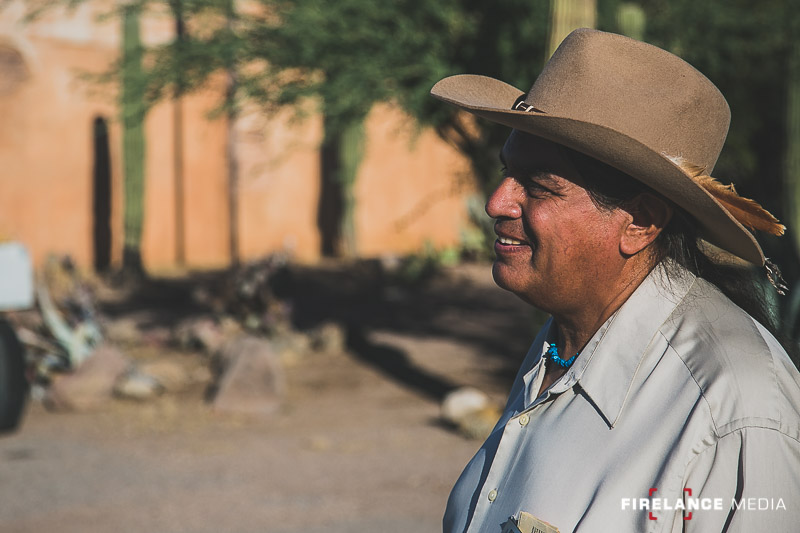



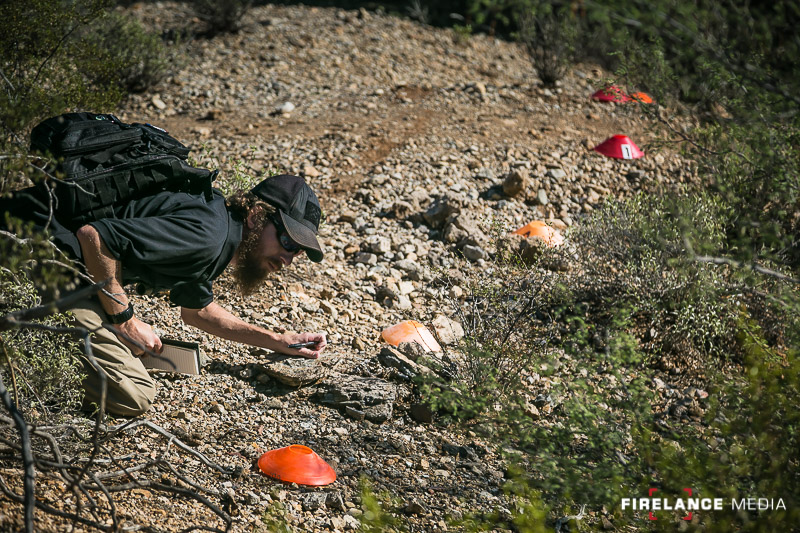
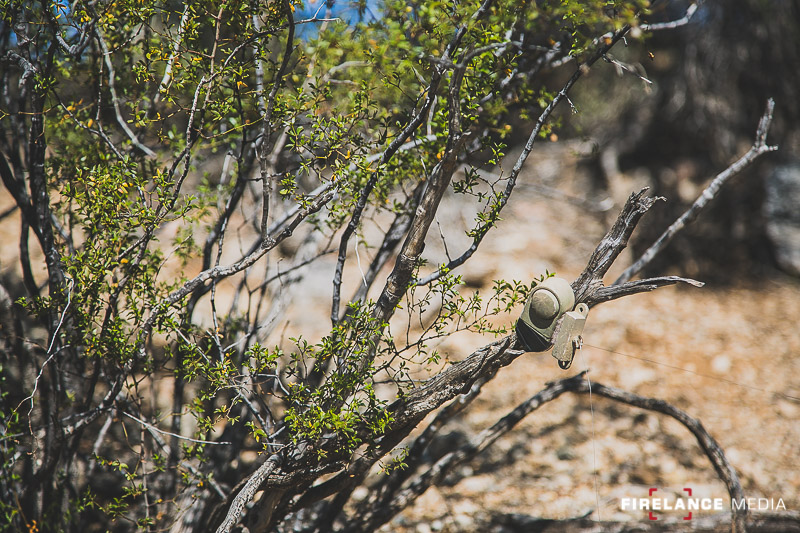
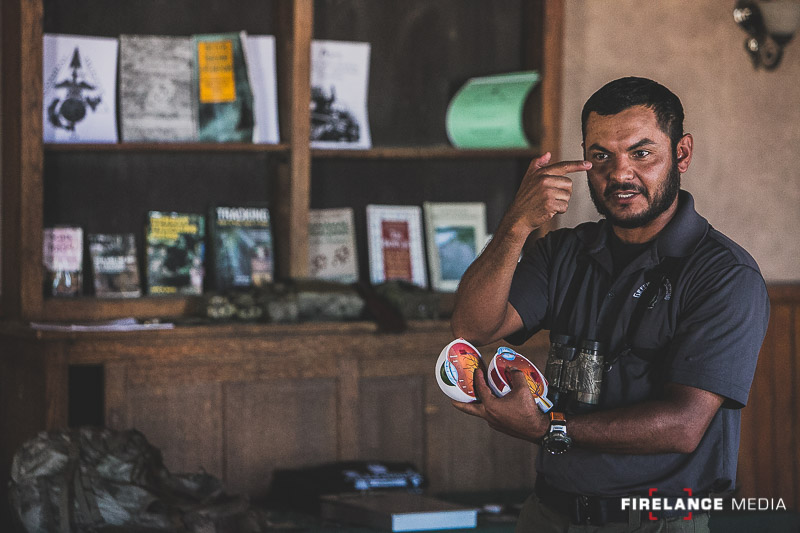
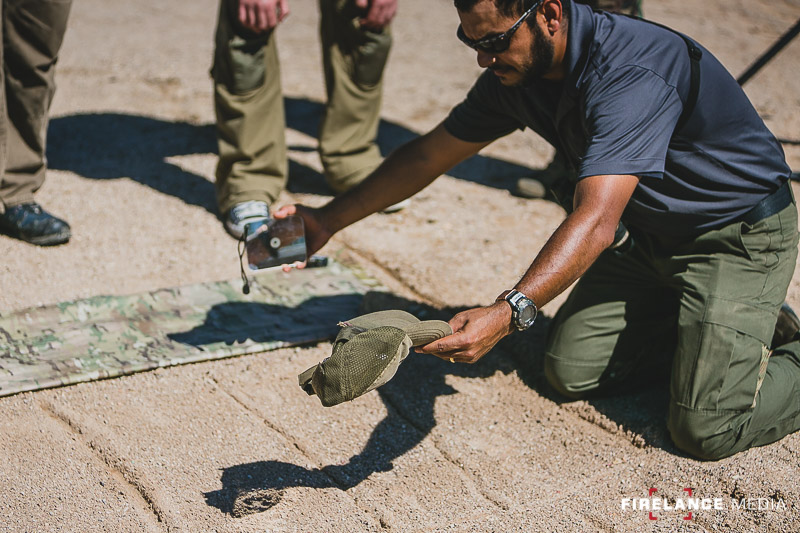
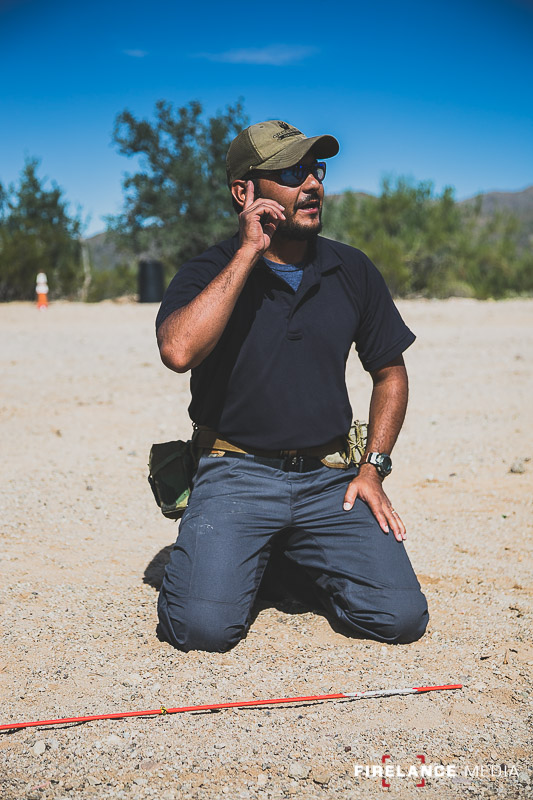

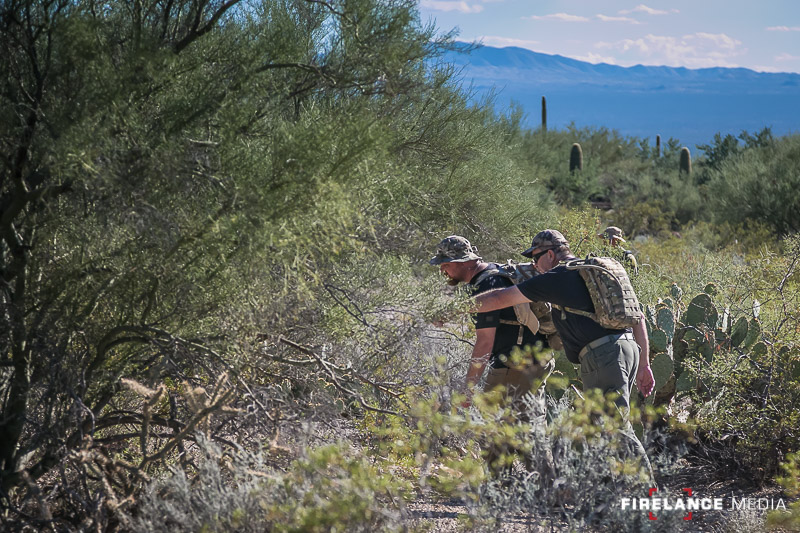
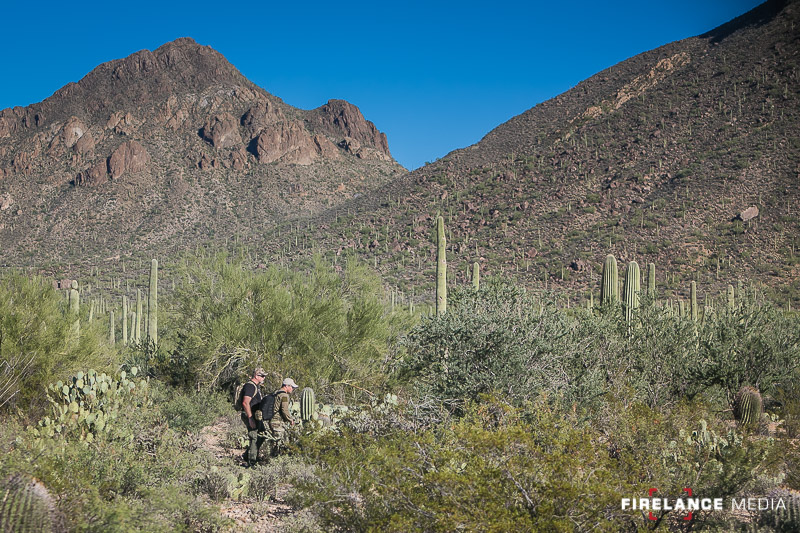

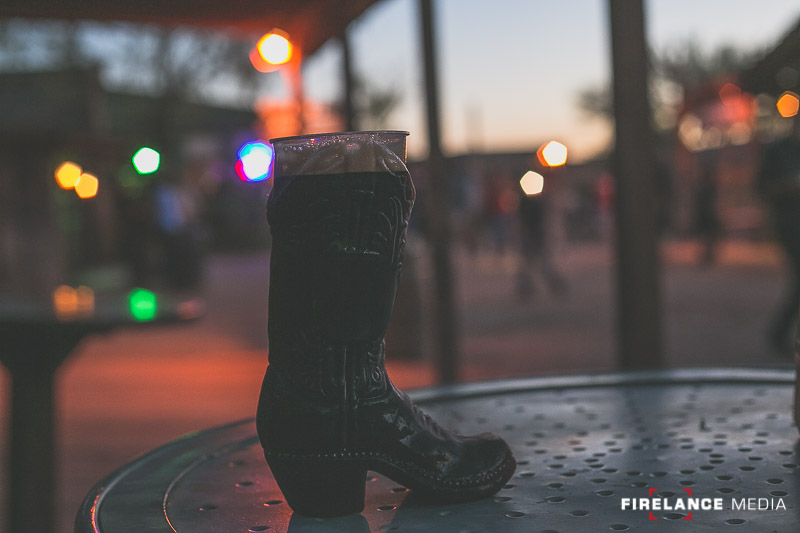

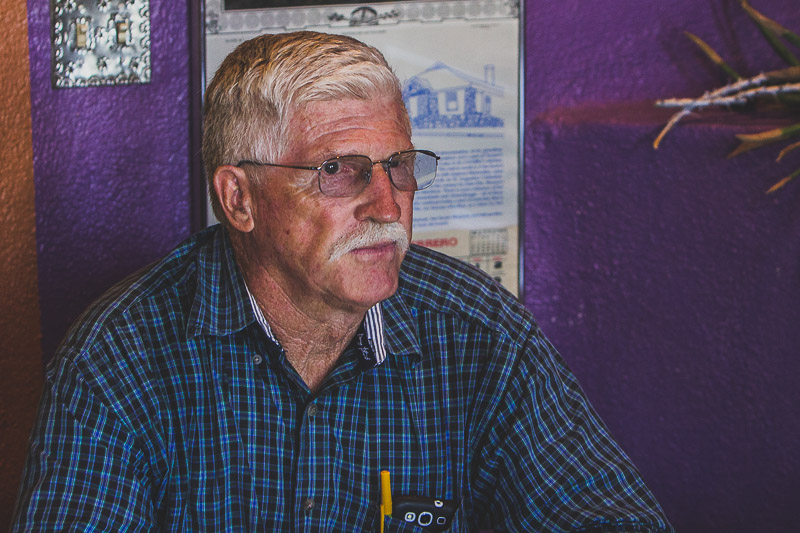


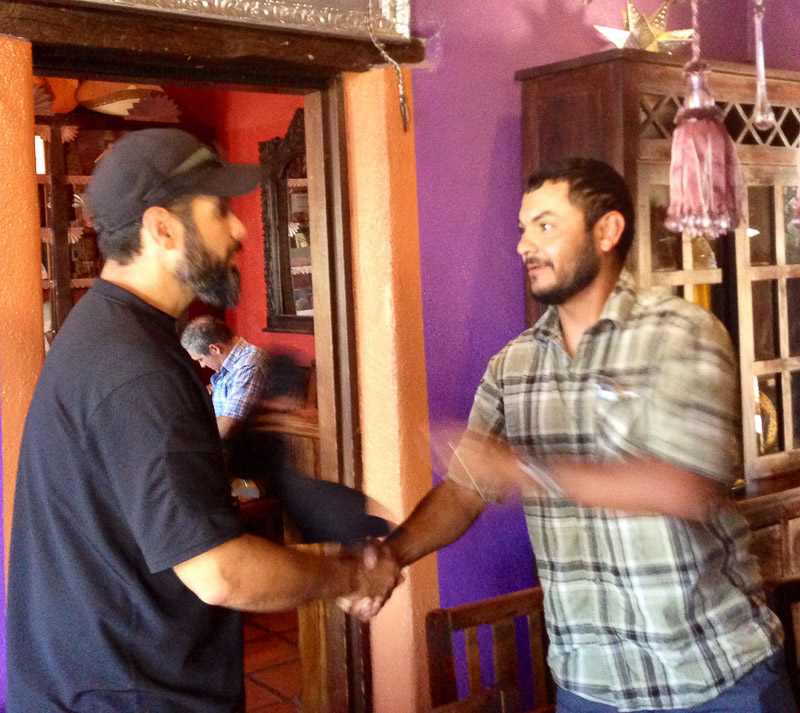
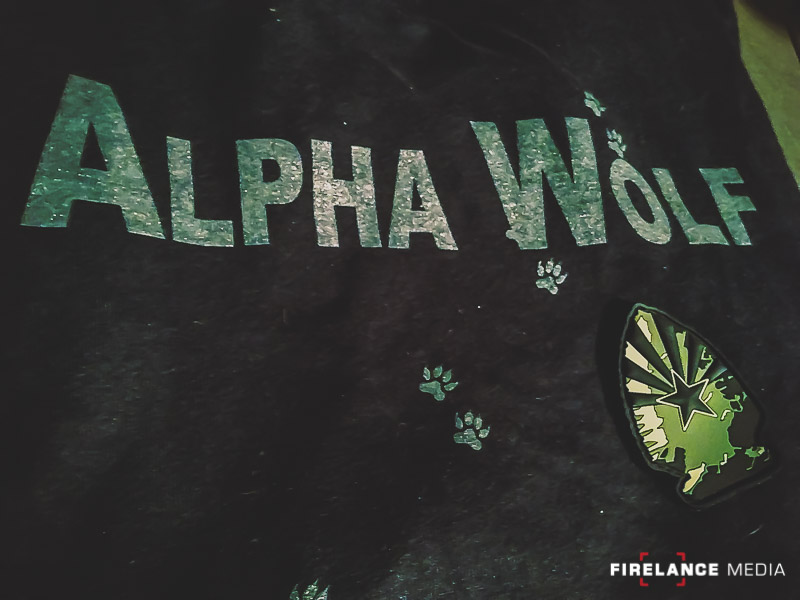
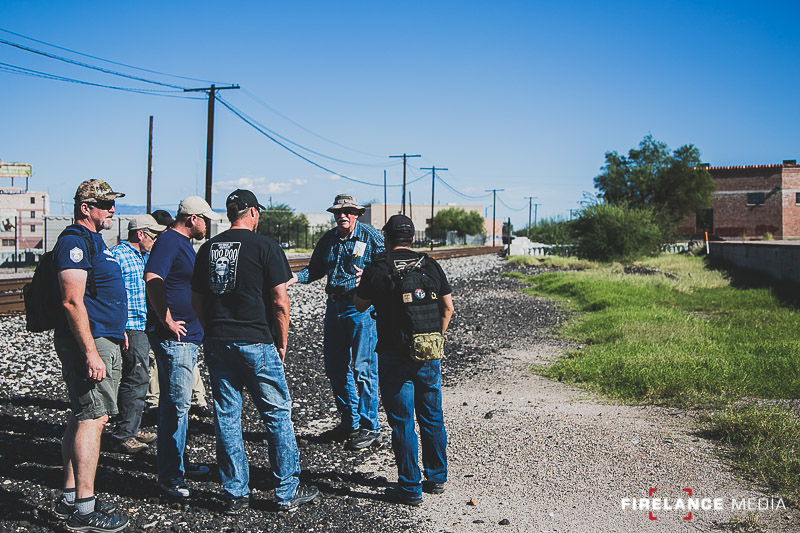
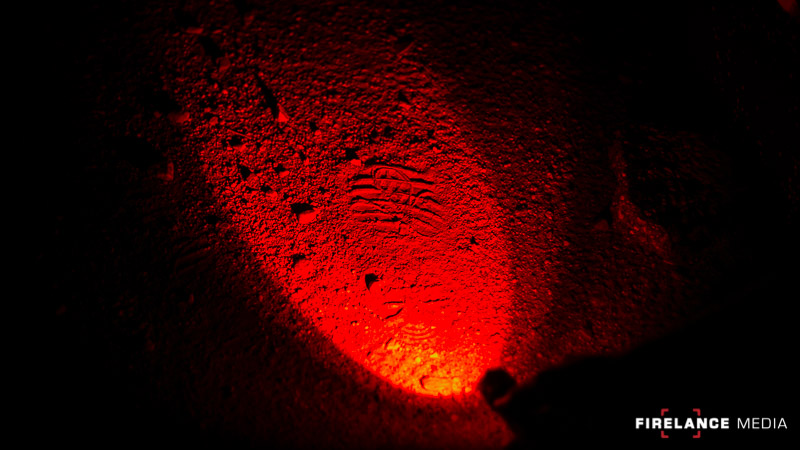
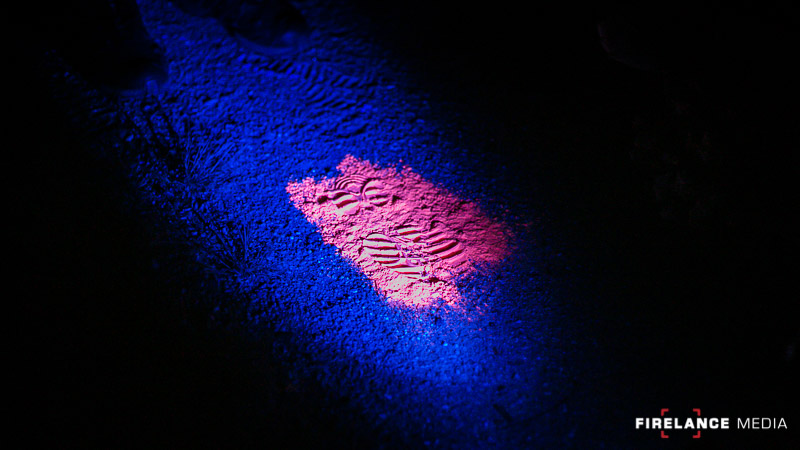
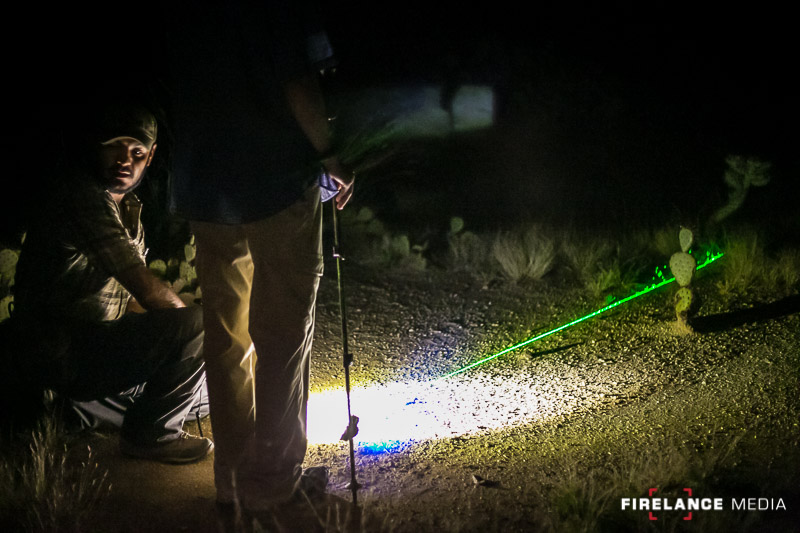
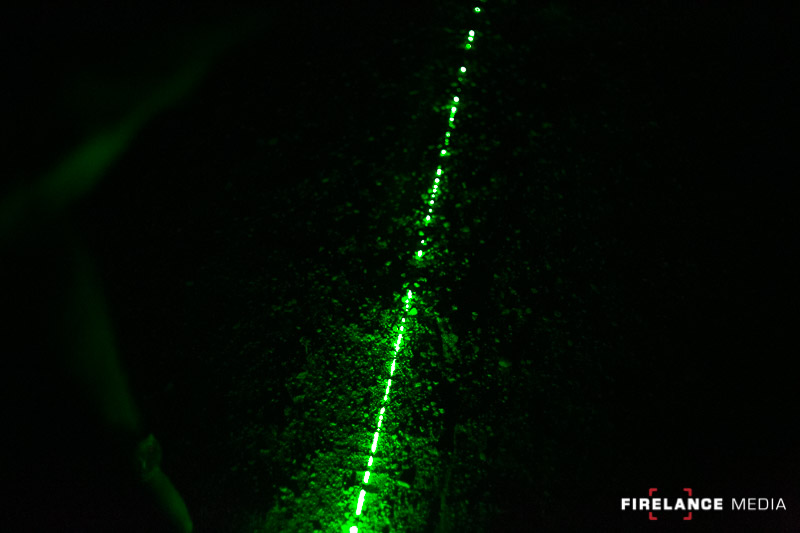
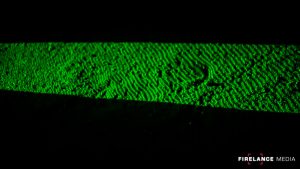
0 Comments on "Greenside Training: Tracking the Human Spirit"